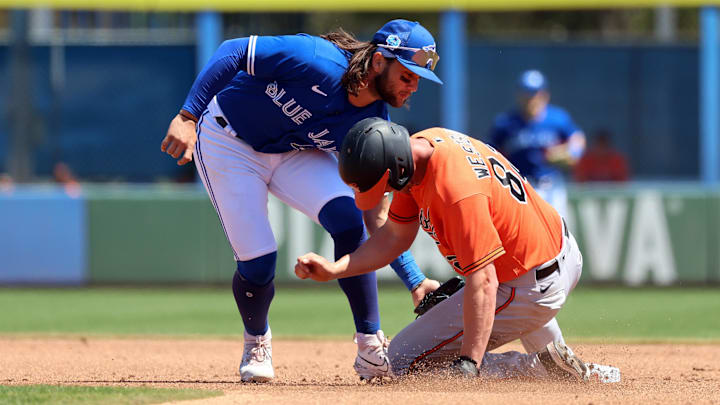One month into the 2023 season, if we take a closer look at the American League East Division in which the Toronto Blue Jays are a part of, one would find some interesting observations. The Tampa Bay Rays have gotten off to a torrid start and are currently sitting comfortably in first place with an unfathomable winning percentage above .800. But more shockingly, the Baltimore Orioles currently occupy second place and is off to one of their best starts in recent years, whereas the perennial division or Wild Card leaders Boston Red Sox and New York Yankees find themselves at the bottom of the division. At the same time, every team in the AL East currently has a record above .500, and each with a positive run differential. What does this all mean for the Blue Jays?
Mind the ascension of the Orioles
Ever since the 2016 Wild Card game against the Blue Jays, the Orioles’ rapid downfall led to some mediocre teams (to put it nicely) that followed that season. They have been slowly building themselves back up the past couple of years through the draft and development of young players such as Ryan Mountcastle and Adley Rutschman, along with value signings such as Anthony Santander, Tyler Wells, and Kyle Gibson to complement them. In doing so, they have slowly but surely become a competitive team again. Just last season, the O's were in the playoff mix until the very end, and this year they have started the season strong right out of the gate.
This is major bad news for the Blue Jays, as if it wasn’t already tough enough to have the Rays, Red Sox, and Yankees together in the same division. The sudden ascension to prime competitiveness by the Orioles has now made the path to a division title, or even the playoffs, that much harder for the Jays.
Evolution of the “Group of Death” in MLB
From years past, it was well known that the AL East was a tough division stacked with powerhouse teams. What kept those teams from having unbelievable winning records was that MLB utilized an unbalanced schedule that heavily weighed games between teams within a division, as teams played 16-20 games per season against each of the other four divisional rivals. However, for the 2023 season, they have implemented a more newly balanced schedule so that each team will face all of the other 29 teams at least one time, thus reducing the number of games teams play against their opponents within a division.
As a result, it is more likely to be sustainable that the AL East teams can continue to have a plus .500 record for the rest of the season, given that many of them have shown great success against teams outside their division thus far, and that they don’t have to battle each other out as much anymore within the division to pile up the losses (since when they play each other within the same division, one team is bound to get a loss, thus keeping the wins lower overall).
If that becomes the case, this again would be troublesome for the Jays, because the possibility of finishing with a winning record, and yet still finding themselves last in the division and missing the playoffs becomes more probable for any AL East team this season. With each of them currently sporting strong records, one can really classify for the first time that MLB has an official “Group of Death” division.
Is it worth spending big anymore?
Another aspect that’s worth noting is that the two teams currently leading the AL East have the league’s second and third lowest payrolls for the 2023 season, whereas the Blue Jays and Yankees are both ranked in the top ten, with the Red Sox closely behind at 13th place with over $181M in salaries. This presents the question, is it still worth it to spend big to have success when it could be done even with minimum payrolls?
The Rays have been the model team that has proven over the years to be quite successful in maintaining a low payroll, yet fielding highly competitive teams. They were able to do so by having an effective, self-replenishing minor league system so that each time they lost a star/high salary player, they would have an equally as effective, yet economical, player to take over the spot. At the same time, they would also add a value player or two through trades or free agency to complement the roster. This appears to be somewhat the same approach the Orioles are apparently undertaking as well, and so far it’s paying off.
So should the Jays think twice in the future on whether they should continue to shell out big money to build their team, when success could also be found with the right management and developmental system in place without huge spending? For now, they are tied up with many big contracts, so it won’t be something they can consider until a year or two later. But if they end up winning it all with their current roster makeup, then this hypothesis could be put to rest.
